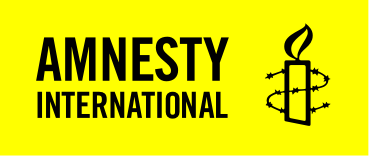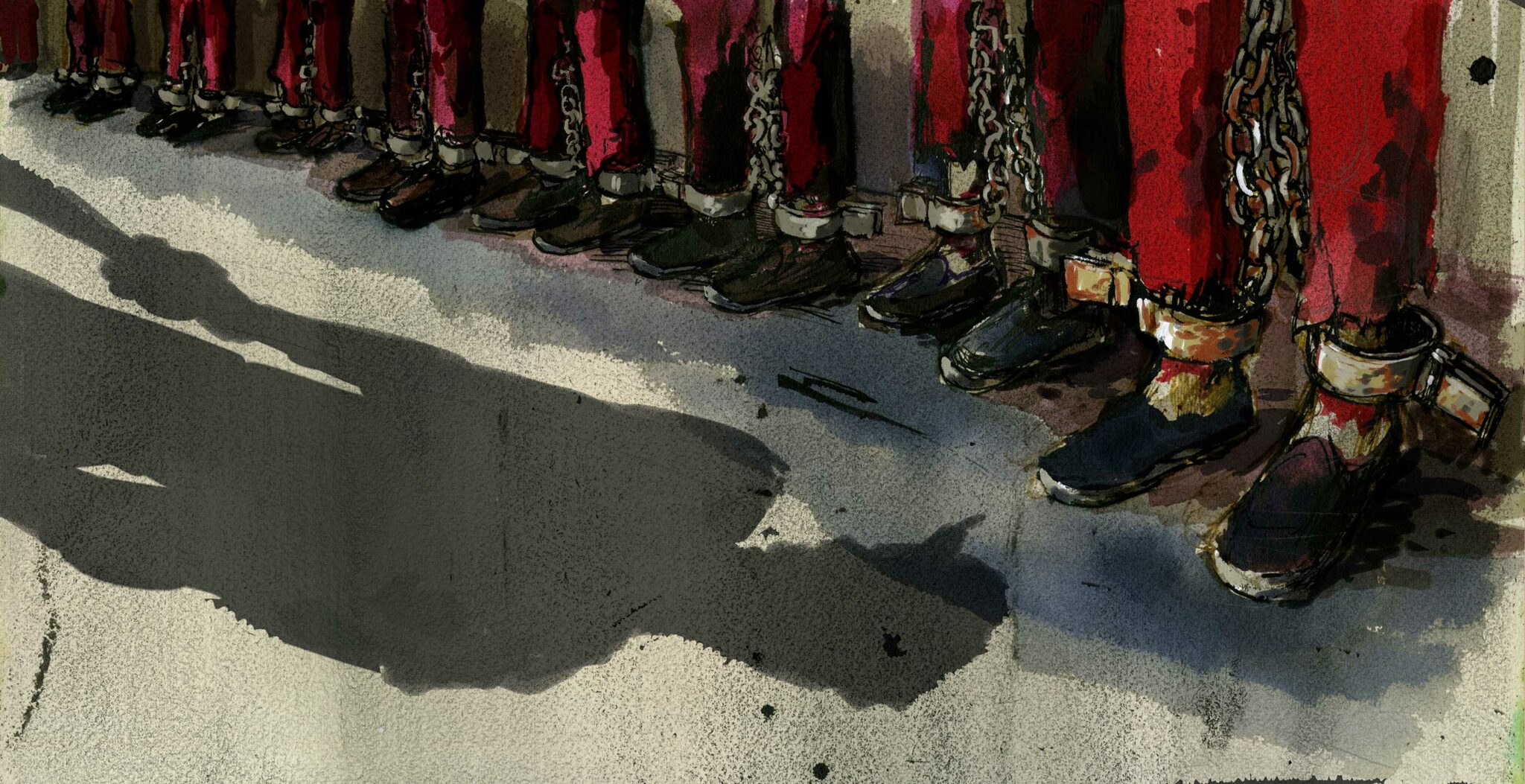Crimes against humanity in international law
Crimes against humanity are offences committed as part of a widespread or systematic attack directed against a civilian population pursuant to, or in furtherance of, a state or organizational policy. [[[For an overview of the objective elements of Crimes against humanity see Cassese’s international criminal law; and International Criminal Court The Elements of Crimes ISBN No. 92-9227-232-2 accessible at →]]] Crimes against humanity are among the most serious crimes of concern to the international community as a whole. They are prohibited during war or peace.
The Rome Statute, the treaty that established the International Criminal Court (ICC), contains articles that define crimes against humanity in a manner widely accepted as generally reflecting customary international law. [[[International Criminal Court, Rome Statute of the International Criminal Court (Rome Statute), in force on 1 July 2002, available at →]]] Article 7(1) of the Statute enumerates 11 crimes against humanity, including imprisonment, torture, and persecution. [[[Rome Statute, Articles 7(1)(a) – (k),: “(a) Murder; (b) Extermination; (c) Enslavement; (d) Deportation or forcible transfer of population; (e) Imprisonment or other severe deprivation of physical liberty in violation of fundamental rules of international law; (f) Torture; (g) Rape, sexual slavery, enforced prostitution, forced pregnancy, enforced sterilization, or any other form of sexual violence of comparable gravity; (h) Persecution against any identifiable group or collectively on political, racial, national, ethnic, cultural, religious, gender… or other grounds that are universally recognized as impermissible under international law, in connection with any act referred to in this paragraph or any crime within the jurisdiction of the Court; (i) Enforced disappearance of persons; (j) The crime of apartheid; (k) Other inhumane acts of a similar character intentionally causing great suffering, or serious injury to body or to mental or physical health.” It should be noted that other international criminal tribunals have used slightly different categorizations and lists of crimes under their jurisdiction, but the Rome Statute is now seen as an authoritative codification of existing international criminal law.]]] These 11 crimes constitute crimes under international law, and as such are criminal wherever they are committed, whether or not they are criminal under domestic law, and whether or not the state concerned has ratified the Rome Statute. [[[For a description of customary international law on crimes against humanity, see Report of the International Law Commission: Sixty-seventh session (4 May-5 June and 6 July-7 August 2015), Chapter 7: Crimes against Humanity, UN Doc. A/70/10, p. 54 (“The characterization of crimes against humanity as ‘crimes under international law’ indicates that they exist as crimes whether or not the conduct has been criminalized under national law.”); see also A. Cassese and P. Gaeta, Cassese’s International Criminal Law, Third Edition, p. 84-92.]]]
Four legal requirements are common to all crimes against humanity:
- the underlying offence must be committed as part of a “widespread or systematic attack”;
- the attack must be “directed against the civilian population” [[[The term “population”, in the definition of crimes against humanity, has been interpreted to imply the “collective nature of the crime as an attack upon multiple victims”. See Situation in the Republic of Kenya, Decision, 31 March 2010 (footnote 44 above), para. 82; Bemba, Decision, 15 June 2009 (footnote 44 above), para. 77; Kunarac, Judgment, 22 February 2001 (footnote 45 above), para. 424; Tadić, Opinion and Judgment, 7 May 1997 (footnote 40 above), para.644. See Prosecutor v. Ante Gotovina, Ivan Čermak and Mladen Markač, Case No. IT-06-90-T, Judgment, vol. II, 15 April 2011, Trial Chamber I, International Criminal Tribunal for the Former Yugoslavia, para.1704), where the court held that “population” means that “enough individuals were targeted in the course of the attack, or that they were targeted in such a way” as to make it clear that the victims were more than just “a limited and randomly selected number of individuals” have been targeted but that this does not require an attack against the “entire population” or all members of the population.]]];
- the underlying offence must be carried out with knowledge of the attack; and
- the attack must be carried out as part of state or organizational policy.
These general requirements establish the context in which specific prohibited acts must take place for them to be considered crimes against humanity. In addition, each specific crime against humanity requires proof of additional elements related to the specific underlying offence.
An attack does not need to be both widespread and systematic; an attack that is either widespread or systematic will suffice. International criminal case law has helped to define what is required for an attack to be considered widespread or systematic. While one factor involved in determining whether an attack is widespread is the number of victims or magnitude of the acts, [[[See Prosecutor v. Akayesu, ICTR Trial Chamber, 2 September 1998, para. 579; Kordic and Cerkez, ICTY Trial Chamber, 26 February 2001, para. 179; Kayishema and Ruzindana, ICTR Trial Chamber, 21 May 1999, para. 123.]]] the term can also have a geographical dimension. [[[Yearbook of the International Law Commission 2019, paras 12 and 13. Supplement No. 10 (A/74/10); The ICC has held that an assessment of the quantitative and geographic facts will depend on the facts of each case: Situation in the Republic of Kenya, Case No. ICC-01/09, Decision pursuant to Article 15 of the Rome Statute on the authorization of an investigation into the situation in the Republic of Kenya, 31 March 2010, Pre-Trial Chamber II, International Criminal Court, para. 95. See also Prosecutor v. Jean-Pierre Bemba Gombo, Case No. ICC-01/05-01/08, Judgment pursuant to Article 74 of the Statute, 21 March 2016, Trial Chamber III, International Criminal Court, para. 163.]]] Systematic means the crimes and other prohibited acts have been committed in an organized manner and that it is unlikely they are merely random events. [[[Prosecutor v. Kunarac et al., ICTY Trial Chamber, Judgment, 22 February 2001, para. 429. See also Prosecutor v. Blaškic, ICTY Trial Chamber, Judgment, 3 March 2000, para. 203; and Prosecutor v. Akayesu, ICTR Trial Chamber, Judgment, 2 September 1998, para. 580.]]] International courts have commonly held that the systematic threshold is met when there are “[p]atterns of crimes – that is, the nonaccidental repetition of similar criminal conducted on a regular basis”. [[[Prosecutor v. Kunarac et al., ICTY Trial Chamber, Judgment, 22 February 2001, para. 429. See also Prosecutor v. Tadic, ICTY Trial Chamber, Opinion and Judgment, 7 May 1997, para. 648.]]]
“Attack directed against any civilian population” is defined in Article 7(2)(a) of the Rome Statute as “a course of conduct involving the multiple commission of acts referred to in [Article 7(1)] against any civilian population, pursuant to or in furtherance of a state or organizational policy to commit such attack.” [[[Rome Statute, Article 7(2)(a).]]]
It is rare for governments to express a policy to direct an attack at the civilian population. Thus the policy element is generally implied from the organized nature of the attack, [[[The Prosecutor v. Laurent Gbagbo, Confirmation of Charges ICC-02/11-01/11-656-Red 12 June 2014, para. 216. Indeed the court held (para 215) that, “an attack which is planned, directed or organised – as opposed to spontaneous or isolated acts of violence – will satisfy the policy criterion, and there is no requirement that the policy be formally adopted.” The court noted that, ”evidence of planning, organisation or direction by a State or organisation may be relevant to prove both the policy and the systematic nature of the attack, although the two concepts should not be conflated.”]]] especially when the crimes consist of “repeated actions occurring according to a same sequence, or (follow)… preparations or collective mobilisation orchestrated and coordinated by that State or organisation.” [[[Katanga TJ, Katanga TJ, ICC-02/11-01/11-534 para. 1109.]]]
Individuals are criminally responsible for crimes against humanity when they commit any of the underlying offences, as long as they have a degree of knowledge about the contextual elements of the crime. Notably, perpetrators must have known that their actions were part of a widespread or systematic attack. [[[Rome Statute, Article 7(1). See also Prosecutor v. Kupreskic et al., ICTY Trial Chamber, Judgment, 14 January 2000, para. 556 (“[T]he requisite mens rea for crimes against humanity appears to be comprised by (1) the intent to commit the underlying offence, combined with (2) knowledge of the broader context in which that offence occurs.”). See also Prosecutor v. Tadic, ICTY Appeals Chamber, para. 271; Prosecutor v. Kayishema et al., ICTR Trial Chamber, Judgment, 21 May 1999, paras 133-34]]] However, an individual does not need to be personally responsible for the actual widespread or systematic attack to be found guilty; a single act can be sufficient if – and only if – it is carried out in the context of a broader attack of which the perpetrator was aware. [[[See A. Cassese and P. Gaeta, Cassese’s International Criminal Law, Third Edition, Chapter 5.]]] Individuals, whether civilian or military, can be held criminally responsible for crimes against humanity for committing, co-perpetrating, indirectly perpetrating, planning, ordering, or aiding and abetting these crimes, as well as for command responsibility. [[[See A. Cassese and P. Gaeta, Cassese’s International Criminal Law, Third Edition, Chapter 5.]]]
Under international law, states may, and in some cases must, exercise universal jurisdiction over crimes against humanity. [[[Amnesty International, Universal Jurisdiction: The duty of states to enact and enforce legislation (Index: IOR 53/008/2001), 1 September 2001, Chapter 5.]]] Any state may, under customary international law, undertake one of the following actions against suspected perpetrators of crimes against humanity, even if the suspects or victims are neither nationals nor residents of the state concerned, and even if the crime(s) did not take place under that state’s jurisdiction or in its territory: (1) bring such suspects before its own courts, (2) extradite them to any state willing to do so, or (3) surrender such persons to an international criminal court with jurisdiction to try persons for these crimes. At least for torture and enforced disappearances, exercising universal jurisdiction over suspected perpetrators is a legal obligation, not a choice. [[[See, for example, UN Convention against Torture and Other Cruel, Inhuman or Degrading Treatment or Punishment, Articles 5-9. As of March 2021, 170 states are party to this Convention, including China; See also CTM, section 6.4.]]]



